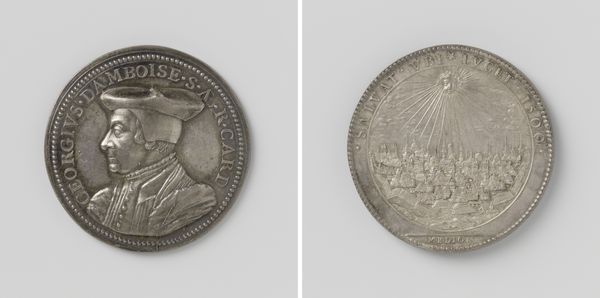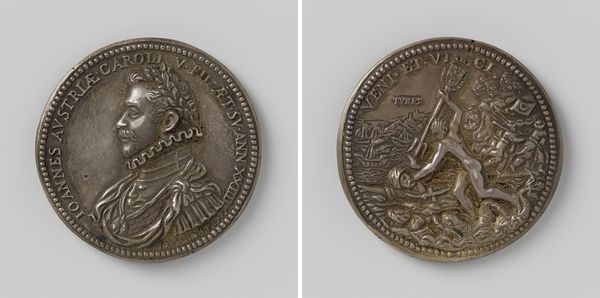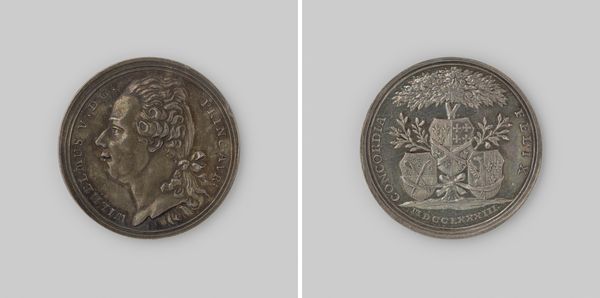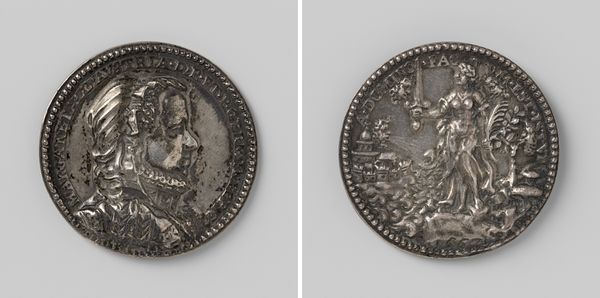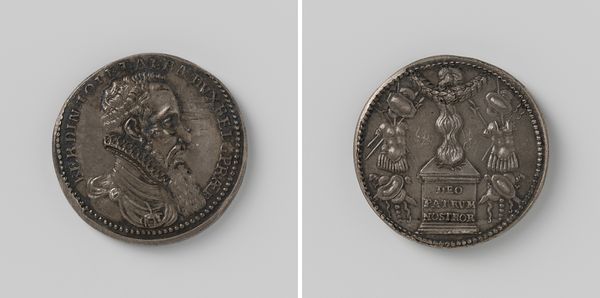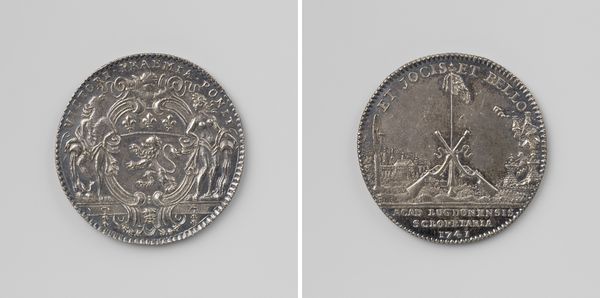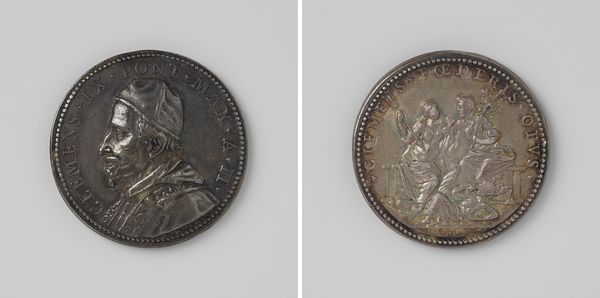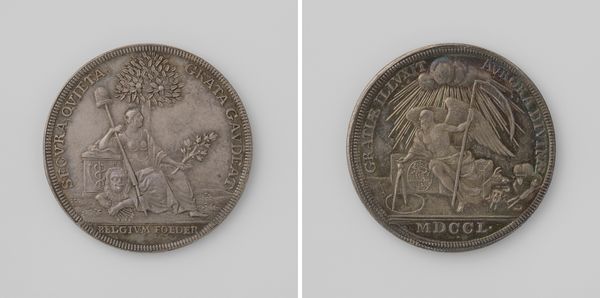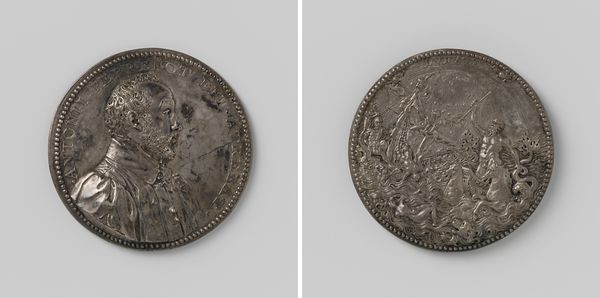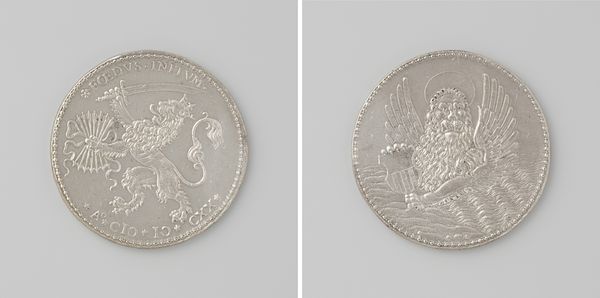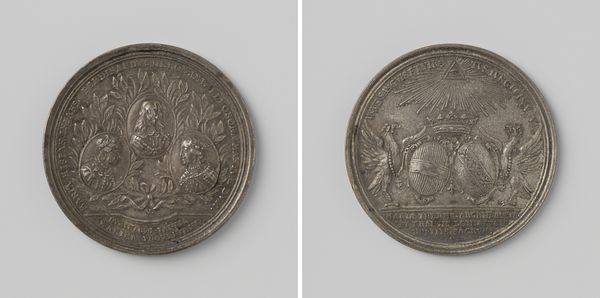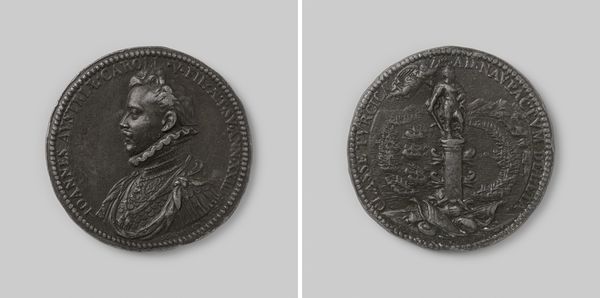
Zeeslag bij Vigo (Vigos): het verbranden van de Franse en Spaanse vloot 1702
0:00
0:00
metal, relief, engraving
#
portrait
#
baroque
#
metal
#
sculpture
#
relief
#
history-painting
#
coin
#
engraving
Dimensions: diameter 4.1 cm, weight 30.96 gr
Copyright: Rijks Museum: Open Domain
Curator: This striking piece is a commemorative medal, specifically “Zeeslag bij Vigo (Vigos): het verbranden van de Franse en Spaanse vloot,” marking the Battle of Vigo Bay in 1702. Editor: Woah. It’s so precise and detailed! Even in monochrome, it almost feels epic, you know? Like a miniature movie scene frozen in metal. Curator: Indeed. Crafted from metal, most likely silver, the medal showcases Baroque sensibilities, evident in its elaborate detail and dramatic composition. Observe the obverse side: Queen Anne is depicted in profile. And the reverse...a lively scene depicting the naval battle itself. The text reads: "CAPTA ET INCENSA GAL. ET HISP. CLASS.," indicating "The French and Spanish fleets are captured and set on fire!" Editor: I love that it’s essentially propaganda you can hold in your hand. Imagine commissioning something like this—a constant reminder of your power, rendered in painstaking detail. Were these commonly distributed or were they unique objects? Curator: Production varied. While some were gifts, often these pieces would circulate within elite circles and those connected directly to the involved courts, acting both as historical documents and as material affirmations of political narratives. Considering the context, these objects speak volumes about maritime trade, mercantilist conflicts and expanding empires. It's fascinating to observe the means of communicating and consolidating power in the early modern period. Editor: And on a purely aesthetic level, this engraver understood dramatic storytelling. The use of smoke in the backdrop to symbolize combustion; how different elements combine on the very small disc! Okay, so I have a question... If I were the Queen and ordered a hundred of these made, would I also handle how and to whom each piece would go, you know? A present for loyal lords and visiting monarchs, maybe? Or toss them into a crowd like, like golden tickets? Curator: It's all quite plausible, considering this era. Distribution and presentation were very considered affairs. This coin itself represents a tangible interaction between the power, people and the means for making. It embodies both symbolic and actual worth. Editor: What a cool relic—a pocket-sized power move, preserved in metal. Curator: A memento to ponder on naval strategies and manufacturing technologies used in both artistic works and wartime tools.
Comments
No comments
Be the first to comment and join the conversation on the ultimate creative platform.
